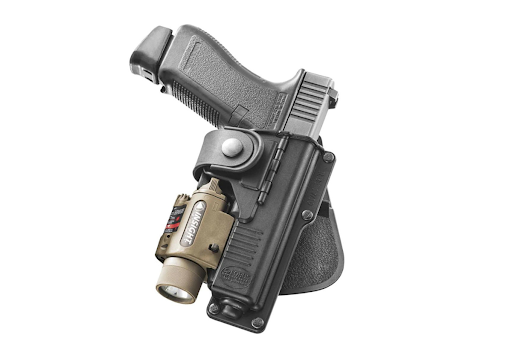
Securing Success: Choosing the Right Retention Holster for You
When it comes to responsible firearm ownership, choosing the right holster is a critical decision. A key factor in this choice is the level of retention a holster provides, ensuring that your firearm stays secure until you intentionally draw it. In this guide, we will explore the importance of retention holsters, the different types available, and factors to consider when selecting the one that suits your needs.
Contents [show]
Understanding Retention Holsters
Retention holsters are designed to prevent unauthorized access to your firearm while providing a secure and quick draw for the owner. The primary goal is to strike a balance between accessibility and security, ensuring that the weapon is readily available to the user while remaining out of reach for anyone else.
Types of Retention Holsters
Level I Retention
Level I retention holsters are the most common and provide a basic form of security. They typically use friction or a basic snap mechanism to secure the firearm in the holster. While they allow for a quick draw, they may not be as secure against attempts to snatch the weapon.
Level II Retention
Level II retention holsters incorporate additional mechanisms, such as a strap or hood, to enhance security. This extra layer of protection requires an intentional and deliberate action by the user to release the firearm. These holsters are ideal for those who want an added level of security without sacrificing quick access.
Level III Retention
The most secure option, Level III retention holsters, employ multiple locking mechanisms, often requiring a combination of movements to release the firearm. While they provide the highest level of security, they may also require more time and practice to master the draw.
Factors to Consider
-
Comfort and Fit
A comfortable holster that fits your body well is crucial for daily carry. Consider factors such as material, size, and adjustability to ensure a snug fit without sacrificing comfort.
-
Retrieval Speed
Evaluate the balance between security and the speed at which you can draw your firearm. Choose a retention level that aligns with your proficiency and training.
-
Concealability
If concealment is a priority, opt for a retention holster that allows for discreet carrying. Some holsters are specifically designed for concealed carry, ensuring that your firearm remains hidden while still easily accessible.
-
Training and Familiarity
The effectiveness of a retention holster or tactical holster is closely tied to the user’s training and familiarity with the holster’s mechanisms. Regular practice is essential to ensure a smooth and confident draw in any situation.
-
Material and Durability
The material of the holster contributes significantly to both its longevity and functionality. Common materials include Kydex, leather, and nylon. Kydex is known for its durability and precise molding, providing a secure fit for your firearm. Leather holsters offer a classic and comfortable option but may require more maintenance. Nylon holsters are lightweight and often more budget-friendly but may not offer the same level of retention and durability as Kydex or leather.
-
Holster Positioning
Consider where and how you plan to carry your firearm. The chosen holster should accommodate your preferred carrying position, whether it’s appendix carry, strongside carry, or inside-the-waistband (IWB). Different positions may require different retention mechanisms to ensure both security and accessibility.
-
User Reviews and Recommendations
Researching user reviews and seeking recommendations from experienced firearm owners can provide valuable insights. Real-world experiences can offer a practical perspective on the durability, comfort, and effectiveness of a particular retention holster. Online forums, social media groups, and discussions at local shooting ranges can be excellent resources for gathering community feedback.
Conclusion
In the realm of responsible firearm ownership, choosing the right retention holster or tactical holster is a decision that should not be taken lightly. Balancing security with accessibility is key, and understanding the different levels of retention, as well as considering factors like comfort, retrieval speed, and concealability, will guide you toward making an informed choice.



